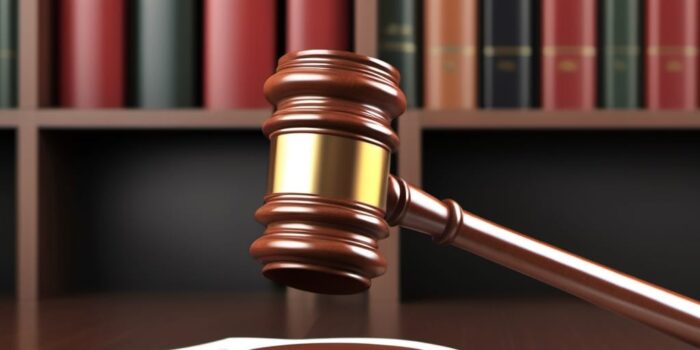In the realm of legal jargon, ‘Toxic Tort’ is a term that often surfaces in cases related to environmental law, personal injury, and product liability. This term refers to a specific type of personal injury lawsuit in which the plaintiff claims that exposure to a chemical caused the plaintiff’s injury or disease. These cases can be complex, often involving intricate scientific data and requiring expert testimony to establish causation.
Understanding the concept of Toxic Tort is crucial for anyone involved in legal proceedings related to environmental hazards, chemical exposures, or product liability. This article aims to provide a comprehensive, in-depth exploration of the term ‘Toxic Tort’, its implications, its applications in various legal contexts, and the challenges associated with these cases.
Definition and Overview
Toxic Tort is a legal term used to describe a particular type of tort or civil wrong where harm has been inflicted due to exposure to a toxic substance. This harm could be a physical injury, a disease, or even death. The toxic substance could be a chemical, a pharmaceutical drug, a pollutant, or any other harmful substance that can cause damage to a person’s health.
The term ‘tort’ itself refers to a civil wrong that causes someone else to suffer loss or harm, resulting in legal liability for the person who commits the tortious act. In the context of a ‘Toxic Tort’, the tortious act is the exposure of the plaintiff to a toxic substance, usually due to the negligence or wrongful conduct of the defendant.
Types of Toxic Torts
There are several types of Toxic Torts, each with its own unique set of circumstances and legal considerations. These include Occupational Exposure, where workers are exposed to toxic substances in the workplace; Pharmaceutical Drugs, where patients suffer harm due to side effects or defects in prescription drugs; and Consumer Products, where consumers are harmed by toxic substances in products they use.
Other types of Toxic Torts include Home and Environmental Exposure, where individuals are exposed to toxic substances in their homes or in the environment, and Toxic Mold, where individuals are exposed to toxic mold in their homes or workplaces. Each type of Toxic Tort presents its own unique challenges and requires a different approach in terms of legal strategy and evidence gathering.
Key Elements of a Toxic Tort Case
There are several key elements that must be established in a Toxic Tort case. The plaintiff must prove that the substance in question is indeed toxic, that they were exposed to this substance, and that this exposure caused their injury or disease. These elements are often difficult to prove, particularly the causation element, which requires demonstrating a direct link between the exposure and the harm suffered.
Additionally, the plaintiff must also prove that the defendant was responsible for the exposure. This could be due to the defendant’s negligence, such as failing to properly store a toxic substance, or due to a product defect, such as a faulty seal on a container of a toxic chemical. Proving these elements often requires expert testimony and complex scientific evidence.
Challenges in Toxic Tort Cases
One of the main challenges in Toxic Tort cases is the scientific complexity involved. These cases often hinge on intricate scientific data and require expert testimony to establish causation. This can make these cases particularly difficult to litigate, as it requires a deep understanding of the science involved and the ability to effectively communicate this science to a jury.
Another challenge is the often long latency period between exposure to a toxic substance and the onset of symptoms. This can make it difficult to establish a direct link between the exposure and the harm suffered, particularly in cases where the plaintiff was exposed to the toxic substance many years before the symptoms appeared.
Scientific Complexity
The scientific complexity of Toxic Tort cases can be a significant hurdle for plaintiffs. These cases often involve complex scientific data and require expert testimony to establish causation. This can be particularly challenging in cases involving low-dose exposures or where the plaintiff has been exposed to multiple toxic substances, making it difficult to establish which substance caused the harm.
In addition, the science of toxicology is constantly evolving, with new research and studies emerging all the time. This can make it difficult to keep up with the latest scientific developments and to ensure that the evidence presented in court is up to date and accurate.
Latency Period
The latency period, or the time between exposure to a toxic substance and the onset of symptoms, can be a significant challenge in Toxic Tort cases. In many cases, symptoms do not appear until many years after the exposure, making it difficult to establish a direct link between the exposure and the harm suffered.
This can be particularly challenging in cases involving diseases like cancer, which can take many years to develop. In these cases, the plaintiff must not only prove that they were exposed to a toxic substance, but also that this exposure was the cause of their disease, a task that can be difficult given the long latency period.
Legal Strategies in Toxic Tort Cases
Given the challenges associated with Toxic Tort cases, it’s important for plaintiffs and their attorneys to develop a strong legal strategy. This often involves gathering robust scientific evidence, enlisting the help of expert witnesses, and effectively communicating the science to the jury.
It’s also important to thoroughly investigate the defendant’s conduct and to establish a clear link between this conduct and the plaintiff’s exposure to the toxic substance. This often involves digging into the defendant’s business practices, safety protocols, and history of compliance with environmental and safety regulations.
Gathering Scientific Evidence
Gathering robust scientific evidence is a crucial part of any Toxic Tort case. This often involves conducting detailed investigations into the toxic substance in question, the circumstances of the plaintiff’s exposure, and the harm suffered as a result of this exposure.
This evidence can come from a variety of sources, including scientific studies, medical records, and expert testimony. It’s important to gather as much evidence as possible and to ensure that this evidence is reliable and up to date.
Enlisting Expert Witnesses
Given the scientific complexity of Toxic Tort cases, expert witnesses often play a crucial role. These experts can provide testimony on the toxicity of the substance in question, the likely effects of exposure, and the link between the exposure and the plaintiff’s injury or disease.
Choosing the right expert witnesses is crucial. They should be highly knowledgeable in their field, able to explain complex scientific concepts in a way that a jury can understand, and able to withstand cross-examination by the defense.
Conclusion
Toxic Tort cases are complex and challenging, requiring a deep understanding of both the law and the science involved. They involve intricate scientific data, expert testimony, and often a long latency period between exposure and harm. However, with a strong legal strategy and a thorough understanding of the science, it’s possible to successfully litigate these cases and achieve justice for those harmed by toxic substances.
Understanding the concept of Toxic Tort is crucial for anyone involved in legal proceedings related to environmental hazards, chemical exposures, or product liability. With this comprehensive overview, you should now have a deeper understanding of what Toxic Tort is, the challenges associated with these cases, and the strategies used to overcome these challenges.
Start Your Journey to Justice with Clear Legal
If you believe you’ve been affected by a toxic substance and are seeking justice, Clear Legal is here to guide you through the complexities of Toxic Tort litigation. Our commitment to ethics, innovation, and quality ensures that we approach each case with the utmost integrity and dedication to achieving the results that positively impact our clients and the world. We understand the challenges you face and are ready to provide the expert legal support you need. Request a free consultation today and take the first step towards protecting your rights with a team that values your trust and strives for excellence.





